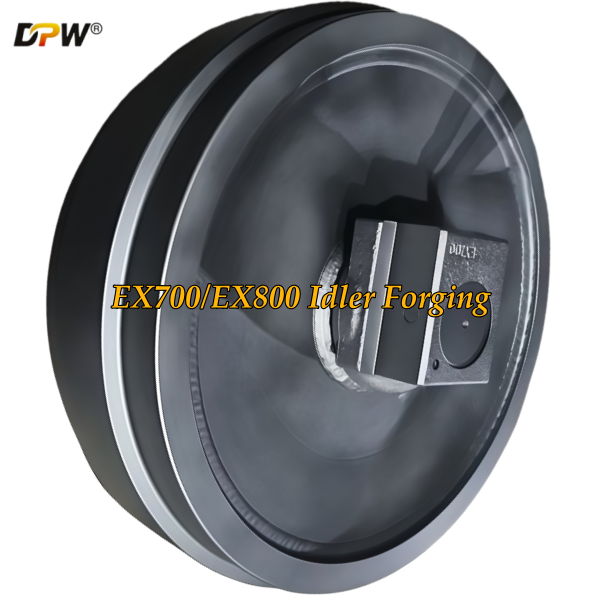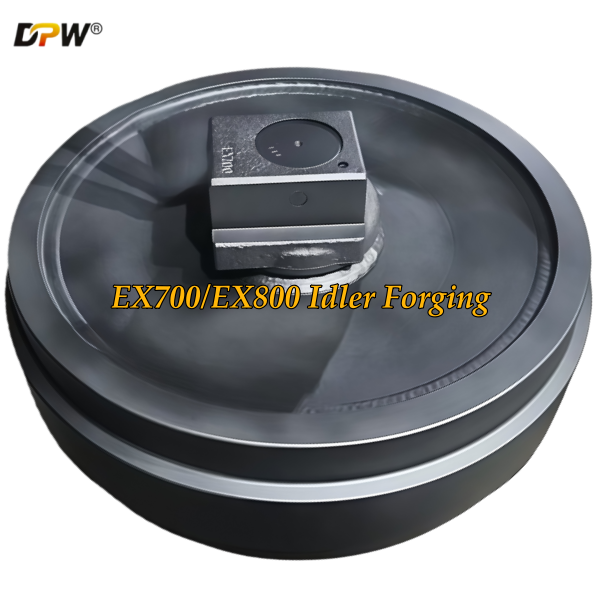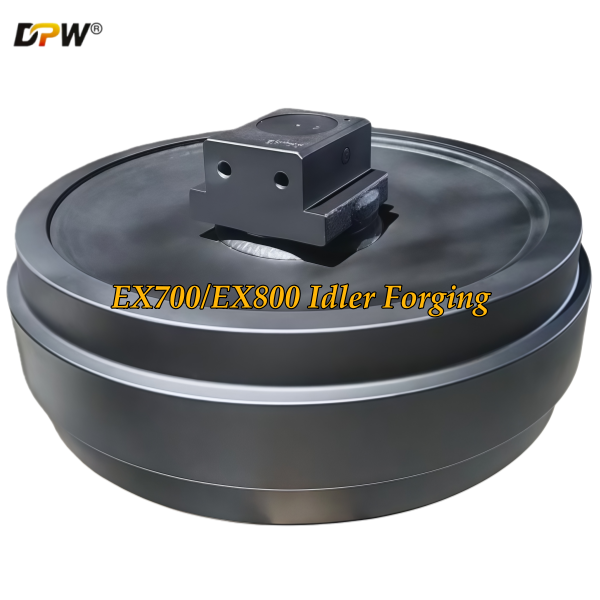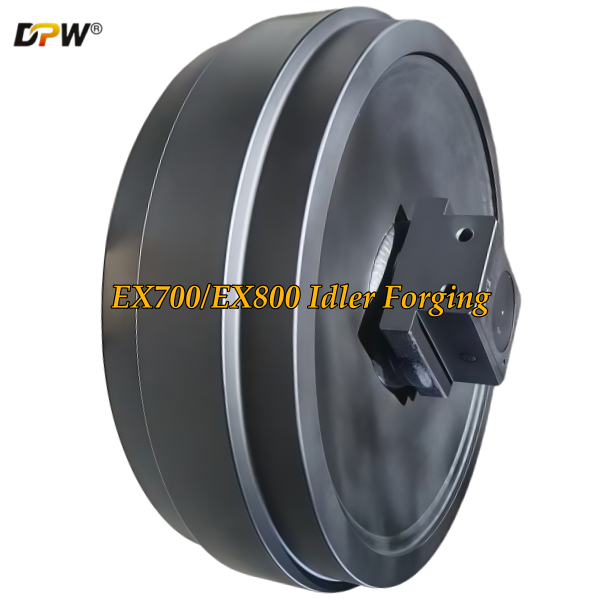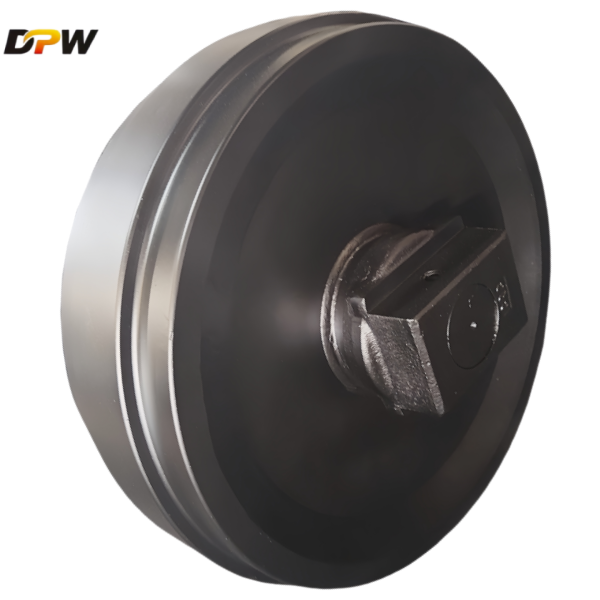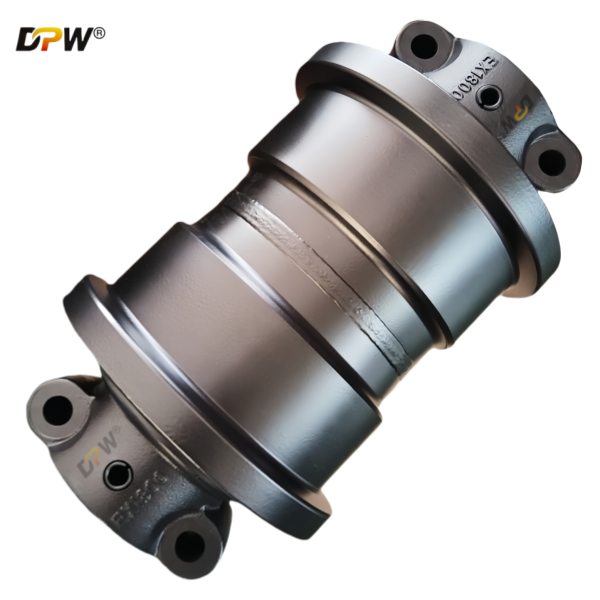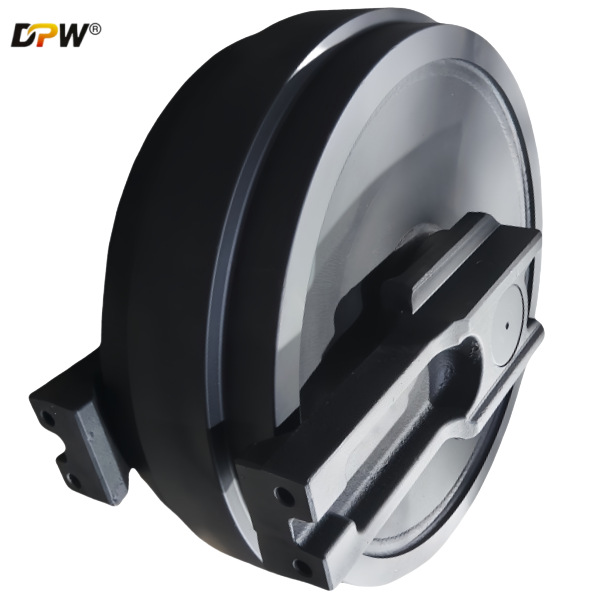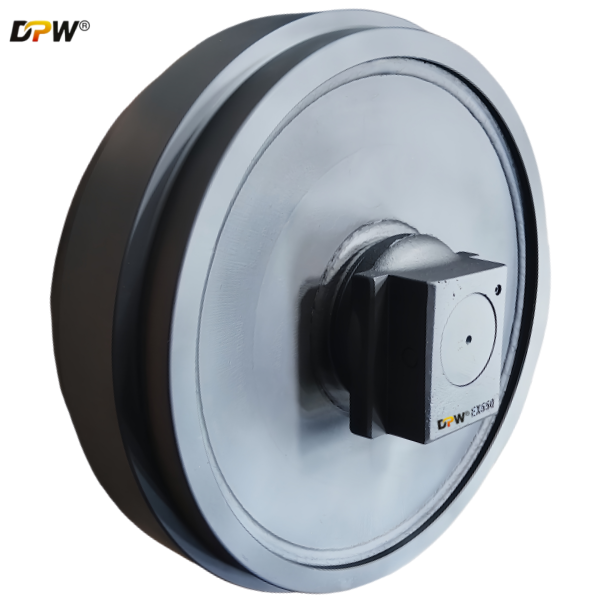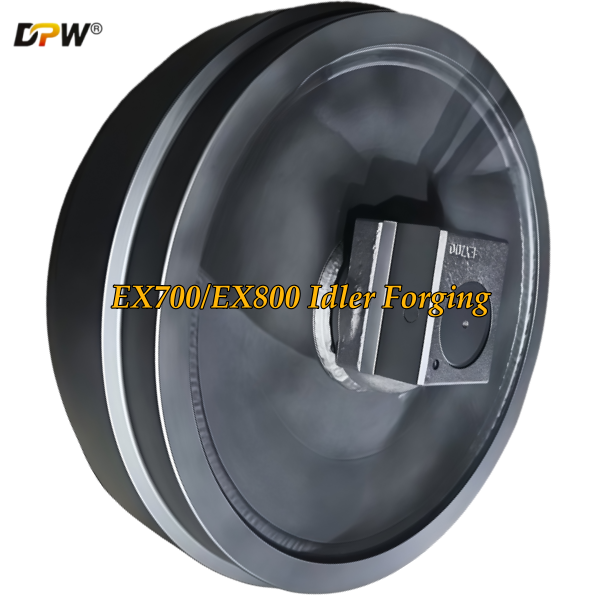
HITACHI 9134272/9188628/4436682/2044033/1026587 EX700/EX800/ZX800 Guide Wheel Assy/Forged Idler Assembly-Made By DPW Parts
Product Specifications
Technical Specification: HITACHI EX700/EX800/ZX800 Guide Wheel & Forged Idler Assembly (P/N: 9134272, 9188628, 4436682, 2044033, 1026587) by DPW Parts
Abstract: This documentation provides a detailed engineering analysis of the aftermarket Guide Wheel and Forged Idler Assembly designed for the HITACHI EX700, EX800, and ZX800 series large hydraulic excavators. The components, referenced under part numbers 9134272, 9188628, 4436682, 2034033, and 1026587, are manufactured by DPW Parts. This overview encompasses functional definition, design topology, material science, manufacturing integrity, and cross-compatibility.
1. System Integration and Functional Overview
The Guide Wheel (also commonly known as the Track Guide Roller) and the Idler (specifically the Front Idler) are two critical components of a crawler excavator's undercarriage system. They work in concert with the track chain, drive sprocket, and carrier rollers to form a continuous, ground-engaging track loop.
Guide Wheel Assy Function: Positioned atop the track frame, directly above the sprocket, the guide wheels' primary role is to constrain the vertical movement of the track chain. They guide the track links on their return path and maintain proper track shoe alignment, preventing lateral derailment ("throwing a track") during side-slope operation or directional changes.
Forged Idler Assembly Function: Located at the front of the track frame, opposite the drive sprocket, the idler serves multiple purposes:
Track Guidance: It guides the track chain into proper engagement with the sprocket and onto the ground.
Tensioning Interface: It is the primary component for adjusting track tension. The idler is mounted on a movable bracket, allowing it to be shifted forward or backward to increase or decrease track tightness.
Load Distribution: It helps support the machine's weight and absorbs forward impact loads from obstacles.
2. Component-Specific Engineering Analysis
2.1. Guide Wheel Assembly (P/N: 9134272, 9188628, etc.)
Design & Construction: This is a sealed and lubricated assembly. It consists of a hardened, precision-ground wheel that rides on a stationary spindle (axle) mounted to the track frame. The internal cavity is packed with grease and sealed by multiple, robust lip seals to exclude abrasive contaminants (water, silt, dust).
Flange Profile: The guide wheel features a robust, double-flange design. These flanges run on either side of the track link, physically preventing the track from sliding off the roller path.
Bearing & Sealing System: The heart of its durability lies in its internal tapered roller bearings, capable of handling significant radial loads. The multi-labyrinth seal system is critical for longevity, ensuring the grease remains in and contaminants are kept out.
2.2. Forged Idler Assembly (P/N: 4436682, 2044033, 1026587, etc.)
"Forged" Design Rationale: The specification of a "Forged Idler" is a key performance differentiator. Forging involves shaping metal while it is in a solid state through the application of compressive forces.
Superior Grain Flow: The forging process aligns the metallic grain structure to follow the general contour of the idler, creating a continuous, unbroken grain flow. This results in superior impact toughness and fatigue resistance compared to a cast or fabricated equivalent.
Enhanced Structural Integrity: Forged components have a higher strength-to-weight ratio and exhibit greater resistance to shock loads encountered when the idler strikes rocks or other obstructions.
Functional Geometry: The idler has a smooth, hardened outer rim that contacts the track chain bushings. Its profile is designed to ensure smooth entry and exit of the track links, minimizing wear on both the idler and the chain.
3. Material Science and Manufacturing Protocol by DPW Parts
DPW Parts utilizes advanced manufacturing and material protocols to ensure OEM-level performance and reliability.
Material Selection:
Guide Wheel: Typically manufactured from high-carbon steel (e.g., 1045/1055), with the wheel's tread and flanges being induction hardened to a high surface hardness (55-62 HRC) for abrasion resistance, while retaining a tough core.
Forged Idler: Fabricated from a high-strength alloy steel such as AISI 4140. The entire component is often through-hardened or selectively induction hardened on the wearing surface to achieve a optimal balance of core strength and surface hardness.
Manufacturing Processes:
Forging: The idler blank is hot-forged to achieve the desired grain structure and mechanical properties.
Precision Machining: Both components undergo CNC turning, boring, and drilling to achieve critical tolerances for bearing bores, seal surfaces, and mounting interfaces.
Heat Treatment: Controlled quenching and tempering processes are applied to achieve the specified hardness and toughness profiles.
Sealing System Assembly: The assembly is completed with high-quality, heat-resistant seals and premium-grade tapered roller bearings, packed with high-temperature, water-resistant grease.
4. Compatibility and Interchangeability (EX700/EX800/ZX800)
The designation "EX700/EX800/ZX800" confirms a high degree of parts commonality across these large-frame HITACHI excavator models. This interchangeability is based on standardized undercarriage dimensions, load ratings, and mounting configurations. It provides end-users with a versatile parts solution, reducing inventory complexity and ensuring correct application across a common fleet.
5. Value Proposition of DPW Parts
"Made By DPW Parts" signifies a high-quality aftermarket alternative characterized by:
Engineering Equivalency: Designed to meet or surpass the original equipment's dimensional, performance, and material specifications.
Rigorous Quality Assurance: Each component is subject to dimensional verification, hardness testing, and non-destructive testing (e.g., Magnetic Particle Inspection) to ensure it is free from manufacturing defects.
Cost-Effective Durability: Offers a significant total cost-of-ownership advantage by providing extended service life at a competitive price point, minimizing machine downtime.

